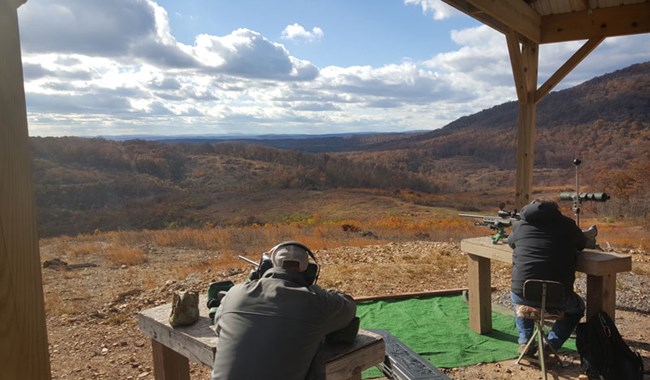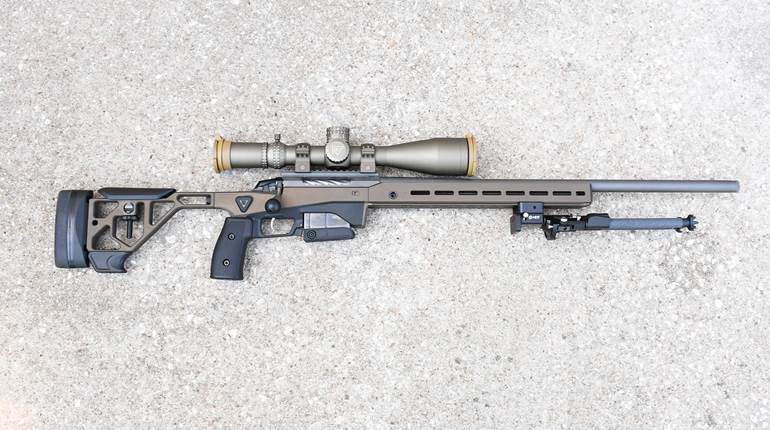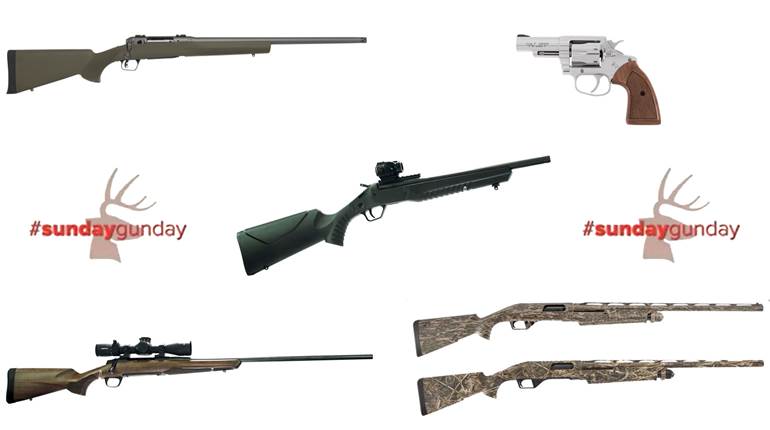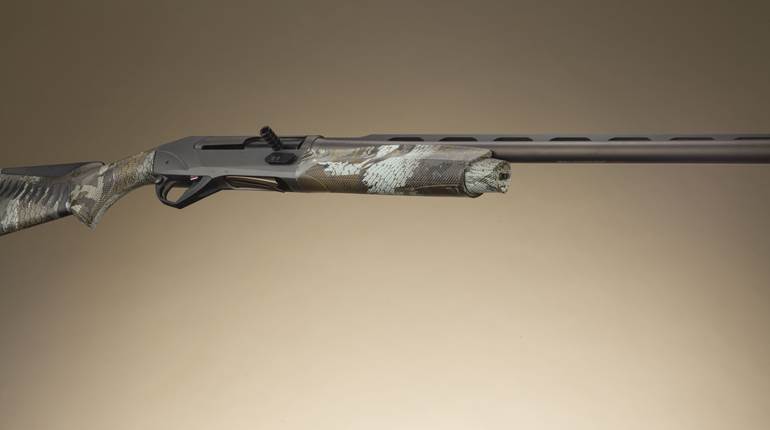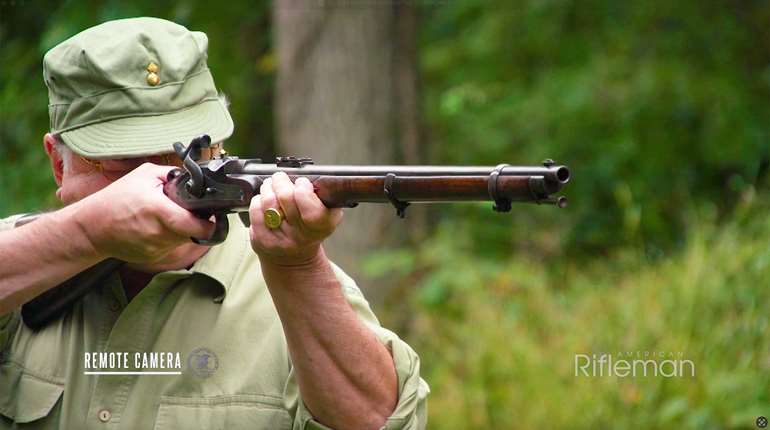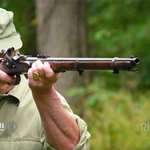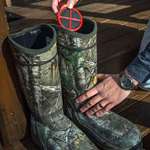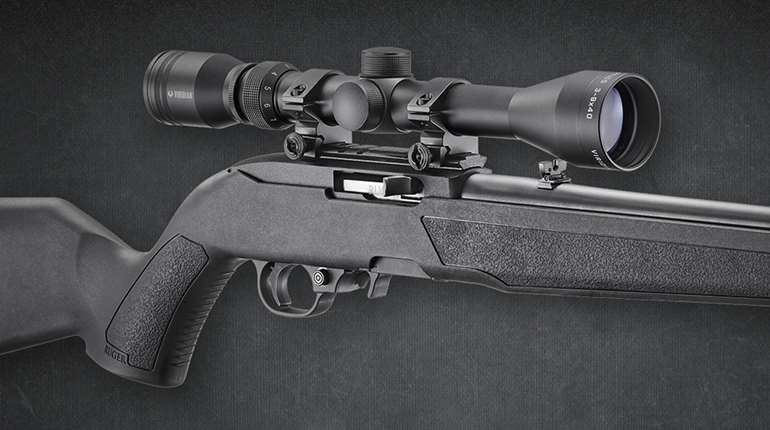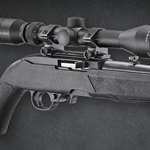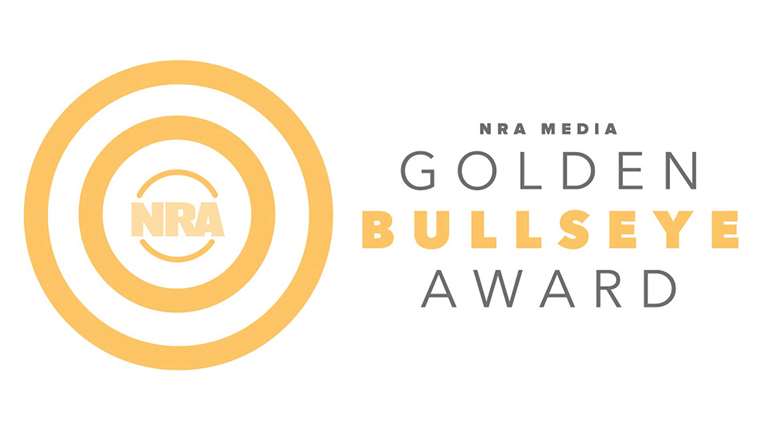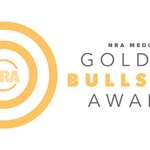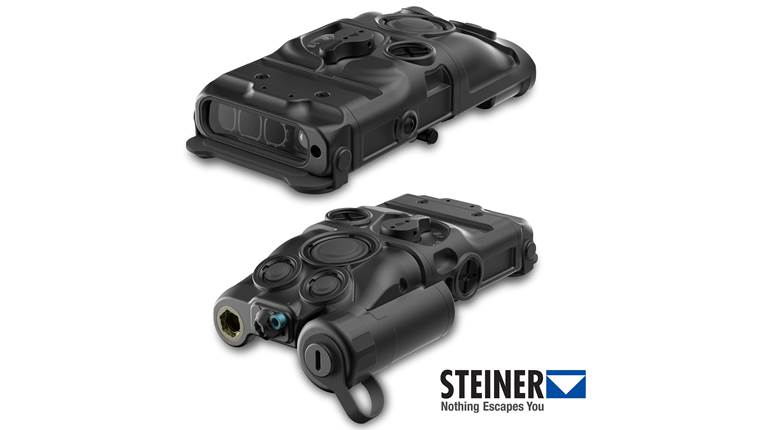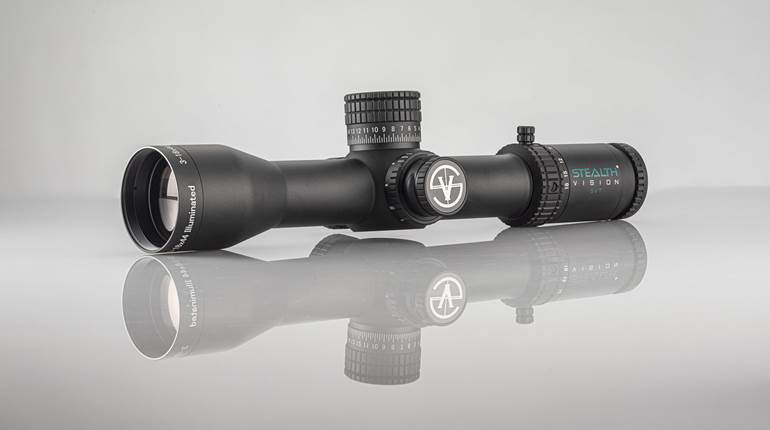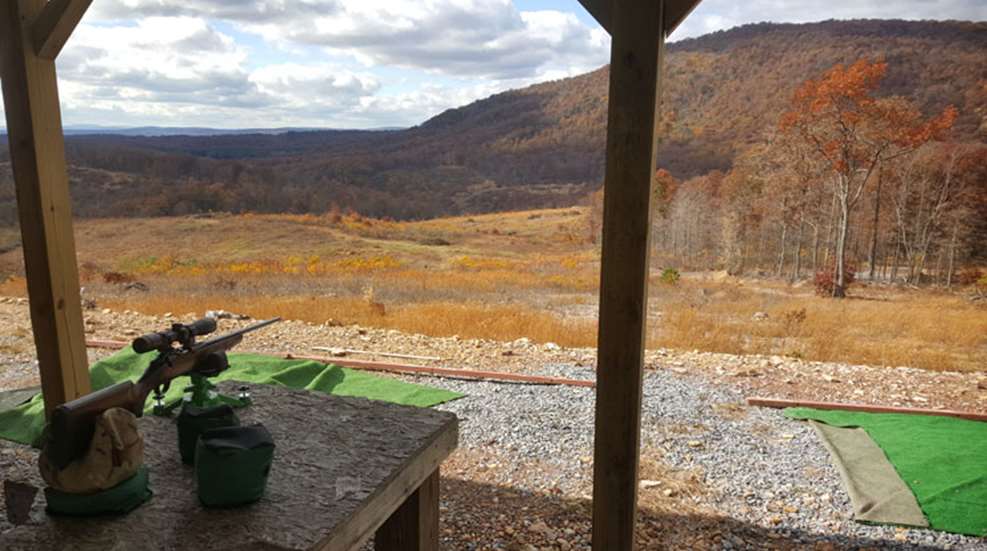
Anyone who has contemplated long-range precision shooting might first assume it requires favorable astrology and black magic to be successful, practically granting mythic status to those practitioners who harbor its secrets. This ethos is not unearned. To the uninitiated, calling the proper holdover and windage on the first shot, not to mention figuring advanced concepts as spindrift and air-density, seem about as probable as a golfer scoring a condor. The multitude of variables, from wind, to atmosphere, to caliber, to parallax (and the list goes on), can appear an almost insurmountable challenge. To determine just where stands that fine line between science and magic, I took a peek behind the curtain with the experts at the Peacemaker National Training Center in Glengary, W.Va., in a one-day “Intro to Long Range” course.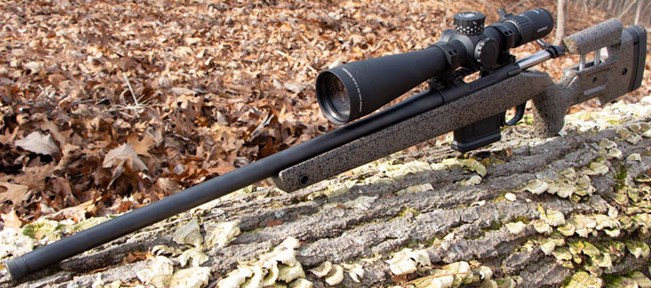
The Bergara B14 in 6.5 Creedmoor, topped with a Leupold Mark V, used for the Intro to Long Range course at Peacemaker National Training Center.
The morning dawned cold and blustery, with about eight other students and myself huddling in our coats, determined to make some sense of the subject at hand despite the adverse conditions. Our instructor was well qualified, having extensive experience as a civilian long-range shooter, in addition to having been a member of Marine Corps anti-terrorist teams. He began the class with a little myth busting, always my favorite segment of any firearm training course. The myth at hand that day—which is extremely important to disprove should one endeavor to get good at long-range shooting—was that most rifles are better than most shooters.
This is absolutely false. At 1000 yards, an MOA rifle shooting perfectly can only shoot a 10-inch group at best. A half-MOA rifle tops out at five.
Having good equipment is key. In long-range shooting, this is even more true, as so much data goes into every shot. In order to have a prayer of making the sorts of hits made by professionals, everything must be absolutely dialed in before a shooter can even begin to focus on the impact of his or her own technique. This means having (at least) the following, before any serious long range work can be attempted: a ½ MOA rifle; match grade ammunition; a wind reader; a range finder; a rear bag; a ballistics table; and a bipod. For a more serious shooter, Labradar and ballistics software should also be acquired. Once all this is sorted out, the real fun can begin.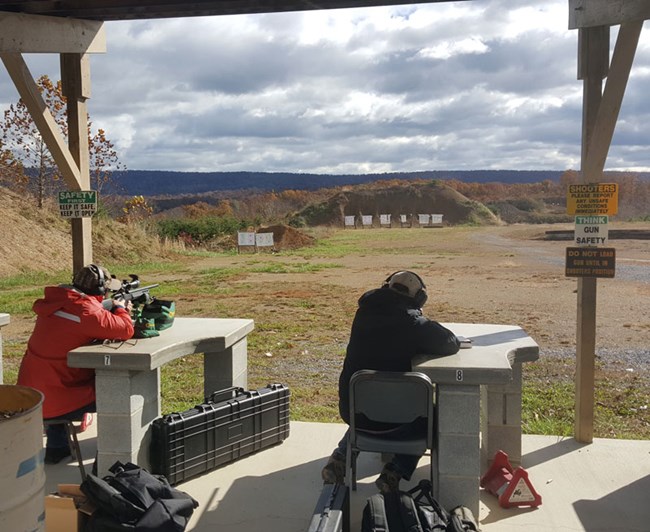
Setup
Proper setup is key. The rifle should be zeroed, preferably at 100 yards, as that will align with the math of most common ballistics tables. Whether using a front bipod or a front bag, the rifle should be as motionless as possible, which means supporting it primarily with something other than one's own hands. The rear bag is thus key to one’s setup. No one is consistently drilling 1000-yard shots with the rear of the rifle supported only by a hand or a shoulder (OK, maybe someone is, but it sure ain’t me). The rifle should point naturally from its location, without any user input to hold it up, down, left or right from where it sits. This done, it’s time to set mechanical parallax.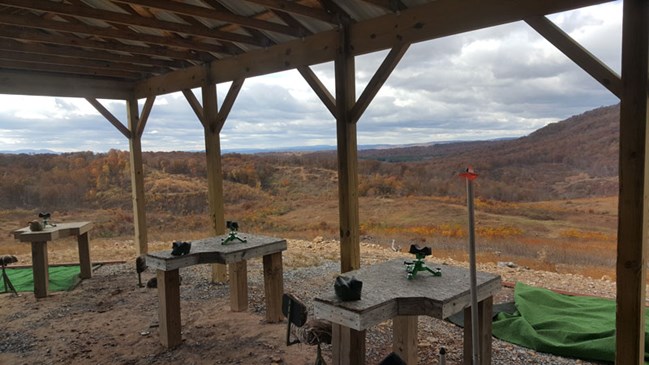
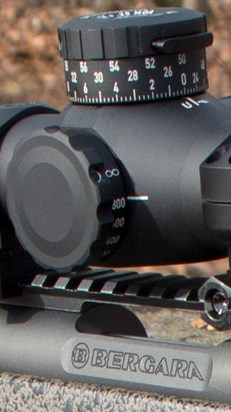 Parallax is the term for when the image of the target and the reticle are not in the same plane. Most quality scopes will have a parallax adjustment for fine tuning to align both on the same plane, thus mitigating any error that might otherwise occur. To set this, a shooter moves his/her head from side to side and watches to see if the reticle bounces around on the target. If it does, the parallax should be adjusted until it stops.
Parallax is the term for when the image of the target and the reticle are not in the same plane. Most quality scopes will have a parallax adjustment for fine tuning to align both on the same plane, thus mitigating any error that might otherwise occur. To set this, a shooter moves his/her head from side to side and watches to see if the reticle bounces around on the target. If it does, the parallax should be adjusted until it stops.
However there is another type of parallax—manual—which is affected by an inconsistent cheek placement behind the scope. A good cheek weld is extremely important for a shooter to land on the same spot on the stock every time and achieve a consistent sight picture.
Setting Crosshairs
Rifle zeroed, placement set and parallax adjusted, it’s finally time to take a serious look downrange and set crosshairs. It is at this point that the wind reader, range finder and ballistics table (either just a standard one found for factory ammunition, or one customized to an exact setup with lab radar and ballistics software) come into play. Without a good range finder, one cannot determine an exact distance to the target, which is vitally important. Without a ballistics table, or at least having one's ballistics table memorized, said information is useless, as one will have no idea how many clicks of MOA or MIL to use to set holdover. Finally, without a wind reader, one hasn't a prayer of holding the correct amount left or right for windage (unless one's “finger in the wind” technique is much better than mine).
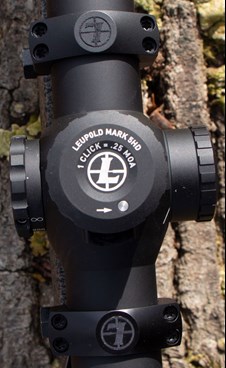 Here is where most people begin to shake their heads in dismay, preferring to eyeball holdovers and cross their fingers rather than let numbers get involved. For the purpose of this article, stats are listed in terms of MOA, as the Leupold riflescope mounted atop my Bergara rifle had both MOA turrets and an MOA reticle. For MRAD equipment, the conversion is quick and easy: 1 MRAD= 3.43 MOA, while 1 MOA at 100 yards equals one inch, extending out like a coned flashlight beam (five inches at 500 yards, 10 inches at 1000, etc.) For this reason, it is extraordinarily helpful to have a first focal plane (FFP) scope.
Here is where most people begin to shake their heads in dismay, preferring to eyeball holdovers and cross their fingers rather than let numbers get involved. For the purpose of this article, stats are listed in terms of MOA, as the Leupold riflescope mounted atop my Bergara rifle had both MOA turrets and an MOA reticle. For MRAD equipment, the conversion is quick and easy: 1 MRAD= 3.43 MOA, while 1 MOA at 100 yards equals one inch, extending out like a coned flashlight beam (five inches at 500 yards, 10 inches at 1000, etc.) For this reason, it is extraordinarily helpful to have a first focal plane (FFP) scope.
For those curious about the difference between first and second focal plane optics, in short, an FFP scope adjusts the size of the reticle in proportion to the target as it zooms in and out, while the reticle size stays the same no matter the magnification on a second focal plane (SFP) scope. As one can probably imagine, having the reticle adjust proportionately saves quite a bit of math over having to figure everything at a preset magnification setting, then convert up or down from there to account for a specific level of magnification.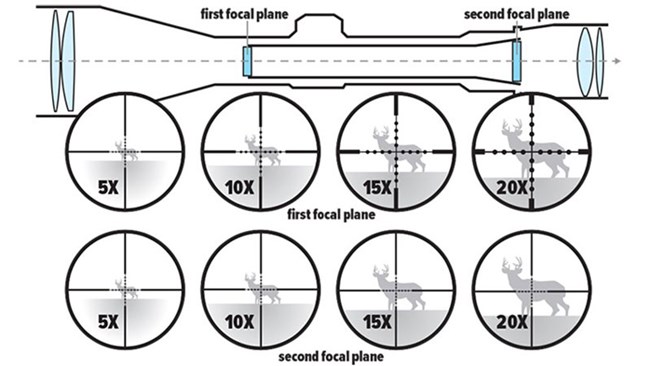
Once distance is determined, a shooter picks a spot on the target and consults the ballistics table to determine how many MOA of holdover will be required at this specific distance. The elevation turret is then adjusted (if it’s in MOA, chances are it is in ¼ MOA clicks) to equal said number. Elevation taken care of, it's time to figure windage.
Herein lies one of those moments where a little art blurs with the hard science of ballistics. Based off the wind speed reported by the wind reader, and the ballistic coefficient of the round, the shooter can determine how many MOA to hold right or left. While some prefer to dial for wind, which is often an inconsistent variable, I prefer to simply hold one way or the other using the hash marks for measurement, a technique our instructor himself endorsed.
When wind is highly inconsistent, a practice known as “wind bracketing” can be used. To accomplish this, a shooter simply takes the highest and lowest wind readings, averages the two, and uses that average to determine the hold.
As it relates to long-range shooting, the dilemma of inconsistent wind leaves a major question on the table. Reading windage at one's own position is all well and good, but the bullet is traveling hundreds, if not more than, a thousand yards. What about the varying winds the bullet could encounter along its flight path? Especially if no makeshift windage gauge near a target—like a windsock or trees—is present, these factors are almost impossible to account for. Fortunately, the closest 30 percent of wind on a bullet flight impacts the shot by 60 percent, and the closest 50 percent impacts 75 percent of the bullet travel. So by gauging wind from one's shooting position, one has a decent chance of hitting home, barring some wildly different conditions downrange.
Another important note that seems obvious, but is often overlooked, is that wind can come from all directions. If the wind is coming directly perpendicular to the rifle (3 or 9 o’clock), this is termed a “full wind,” and the full MOA value of windage should be used to compensate. If the wind quarters at the shooter (1 or 11 o’clock), this is termed a “half-wind.” Don’t let the name fool you however; for this sort of wind, the MOA value should be multiplied by .75, not cut in half as its name suggests, to determine the correct hold.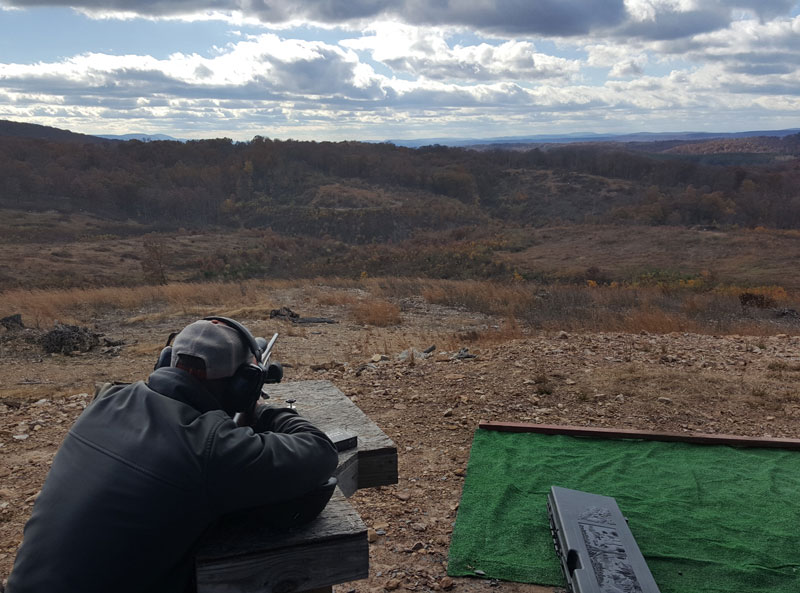
View of targets at 800-1000 yards ("Targets? What targets?!")
Believe it or not, with all these factors considered, these fundamentals will help even beginning shooters place shots with some authority out to around 800 yards. Past that, spindrift and air-density become more important, making that level of long-range shooting the subject for another class entirely. Perhaps I should look into Peacemaker's Intermediate Long Range course ... . As my first foray into long-range precision shooting, I can attest to the benefit of being taught by professionals, such as those at Peacemaker. Prospective long-range precision shooters who are not located within a practical traveling distance of Peacemaker should research the available classes in their region of the country. To learn more about Peacemaker, however, please visit peacemakernational.com.